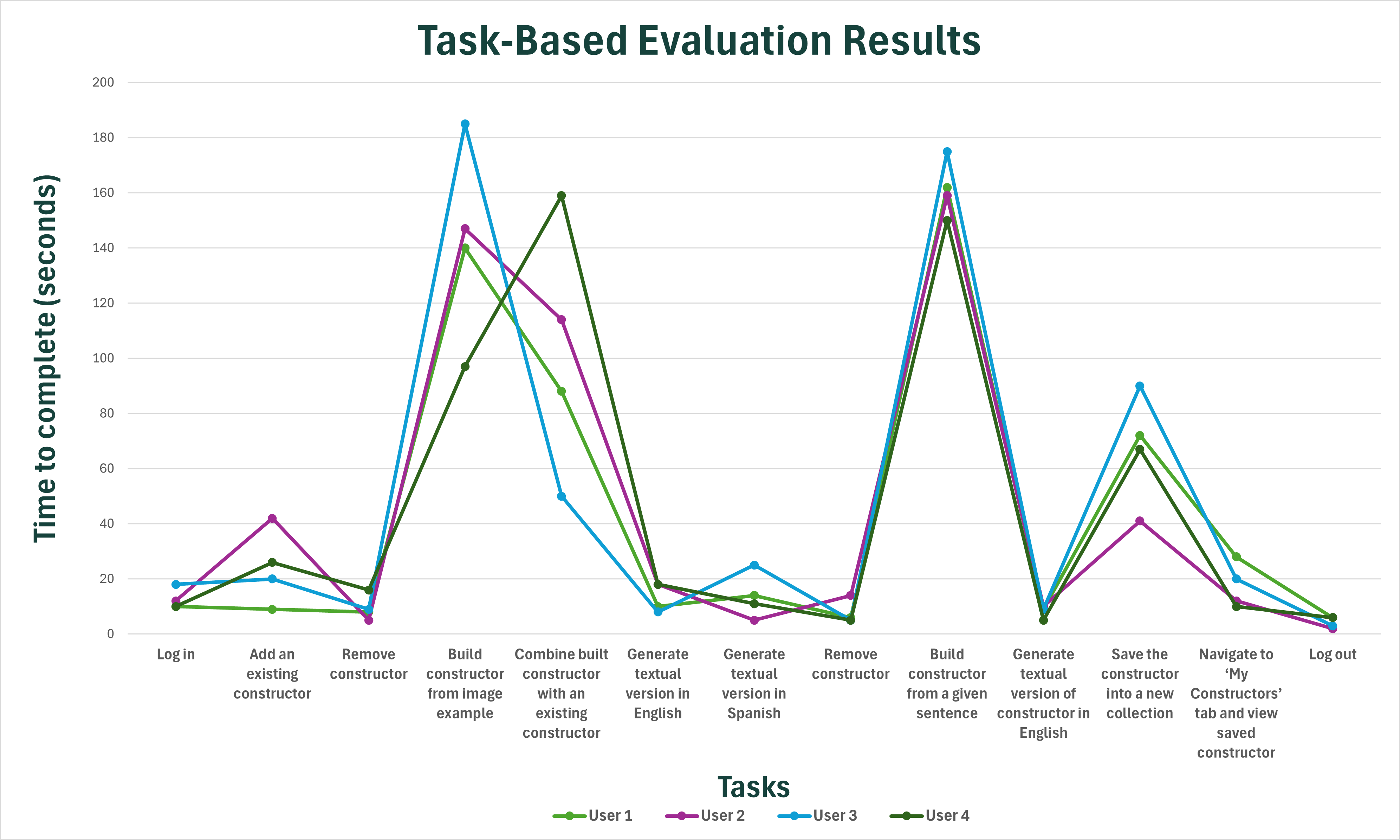Task-based Evaluation
Users were assigned a series of tasks to complete, including both simple navigation tasks e.g. (log in, navigate to a tab) and more complex tasks, such as building a constructor from a given sentence.The time to complete and success rate for each task were recorded per user.
Results
Users completed simple tasks quickly, suggesting they are intuitive and well-supported by the system. Longer times for complex tasks indicate higher cognitive demands, but it's important to note that participants were non-experts with limited experience in CoSMo. Despite this, the 2-3 minute average for complex tasks is reasonable. The task success rate was also high, with only 3 small errors discovered across all users.

